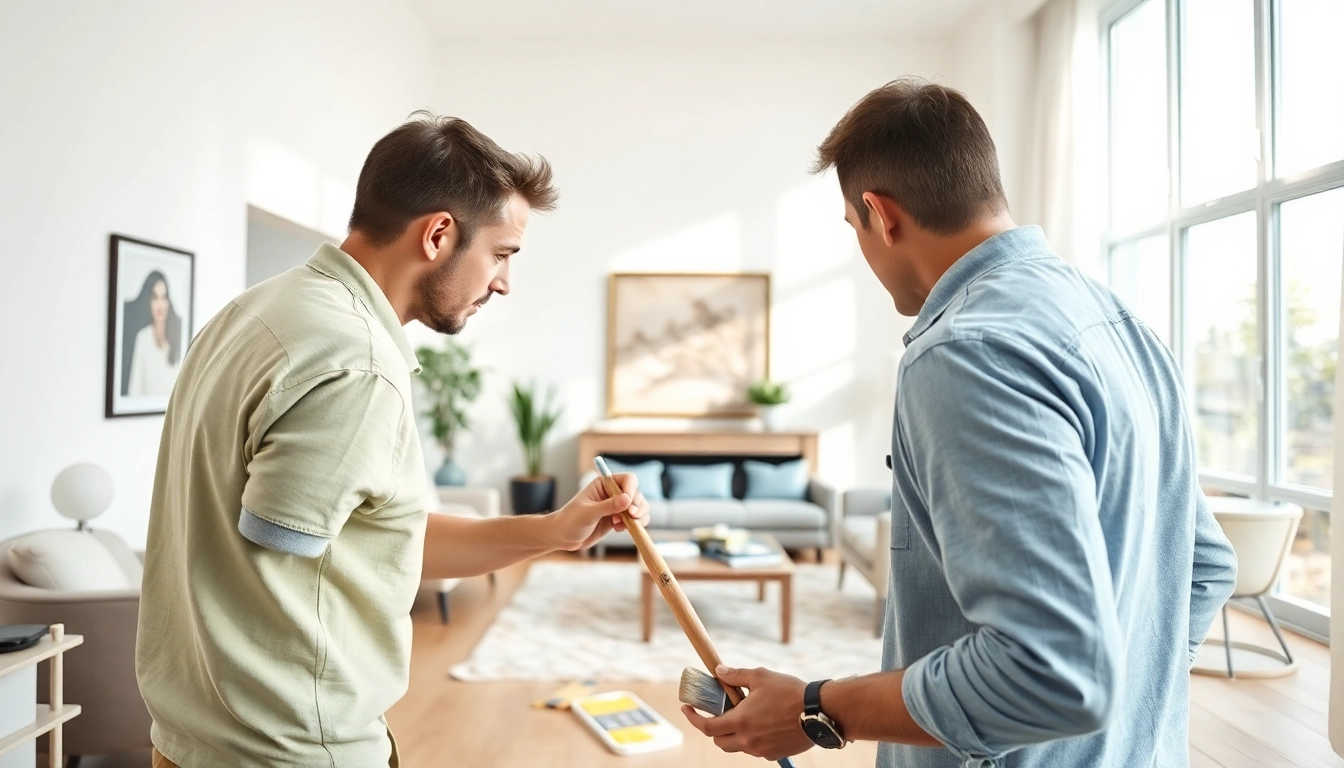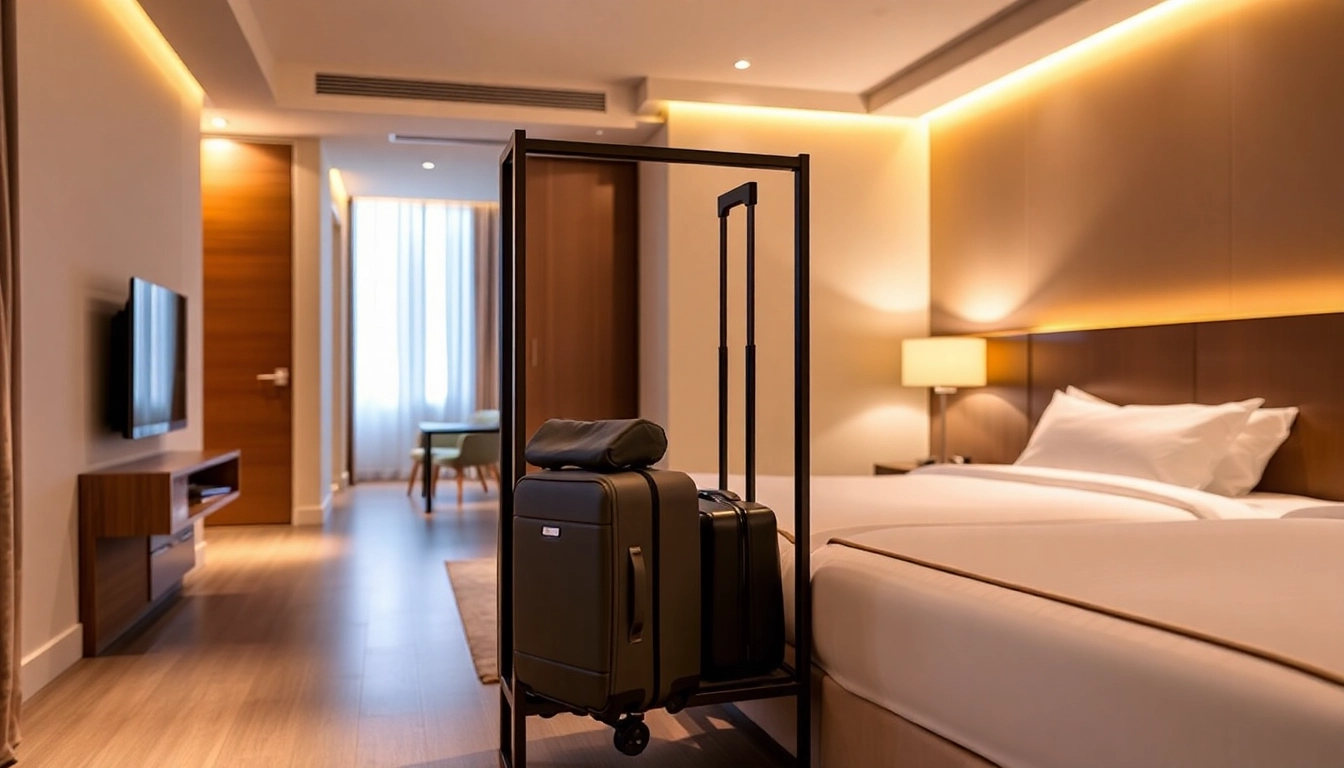Understanding the Basics of Interior Painting
What is Interior Painting?
Interior painting refers to the process of applying paint or other coatings to the interior surfaces of homes, offices, and other buildings. It’s not merely about aesthetics but also about creating a conducive environment where colors can evoke feelings and moods within a space. Whether the goal is to brighten a room, accentuate its features, or simply refresh the old paint, understanding interior painting is essential for anyone looking to enhance their living or working environment. A properly executed interior paint job can significantly increase the value of a property and improve its overall ambiance. Many homeowners find value in investing in interior painting for both functionality and decoration.
Essential Tools and Materials
Before diving into the painting process, having the right tools and materials at hand is crucial for success. Here are the essential items you will need:
- Paint Brushes: Various sizes for detailed work and corners.
- Rollers: For efficiently painting large wall areas.
- Paint Trays: To hold and distribute paint from cans to rollers.
- Drop Cloths: To protect surfaces and floors from spills.
- Painter’s Tape: For clean lines around baseboards, windows, and door frames.
- Primer: To ensure better paint adhesion and color vibrancy.
- Paints: Choose the right finish (matte, eggshell, satin, semi-gloss, gloss) based on your project’s needs.
- Safety Gear: Such as gloves, goggles, and masks to protect from dust and fumes.
Choosing the Right Paint Type
Selecting the right paint type and finish is pivotal in achieving lasting results. Depending on the room’s function, humidity levels, and desired aesthetics, the choice may differ:
- Latex Paint: Widely used for its easy cleanup and flexibility; ideal for walls.
- Oil-based Paint: Offers durability and a smooth finish but requires solvents for clean-up.
- Primer Paint: Essential for proper paint adhesion, especially on new surfaces.
- Specialty Paints: Such as washable or mildew-resistant paints are great for kitchens and bathrooms.
Preparing Your Space for Interior Painting
Decluttering and Protecting Furniture
Before commencing interior painting, it’s imperative to declutter the space. This not only allows easier access but also prevents accidental damage to your belongings. Clear furniture out of the room or move it to the center and cover it with drop cloths to protect from splashes and spills. Remove wall hangings, curtains, and any fixtures that could obstruct your painting path.
Wall Preparation Techniques
Proper wall preparation is essential for achieving a flawless and enduring paint finish. Begin by cleaning the walls to remove dust, dirt, and grease. If there are any imperfections, such as holes and cracks, fill them with spackle or joint compound, then sand smooth once dry. Ensure the surface is dry, and consider applying a coat of primer, particularly on patched areas or when switching from a darker to a lighter color.
Setting Up Your Workspace
Creating an organized workspace is vital for efficient painting. Lay down drop cloths to protect your flooring. Keep all your tools organized within easy reach; a bucket can serve as a mobile caddy to save time during your project. Ensure adequate lighting to spot areas needing attention easily and maintain ventilation by opening windows and using fans to minimize fumes.
Step-by-Step Process of Interior Painting
Applying Primer: Why It Matters
Applying primer is often overlooked, yet it is an essential step in the painting process. Primer helps create a stable surface for paint, improves adhesion, and can stabilize color changes—especially beneficial when covering bold colors or stains. Choose a primer suited for your paint type (either oil-based or water-based) and apply it using a roller for large areas and a brush for edges and detailing.
Executing the Painting Technique
When it comes to actual painting, the technique used can significantly affect the final appearance. A commonly recommended approach is to start with the edges and corners using a brush, then transition to using a roller for flat surfaces. Work your way from top to bottom—starting with the ceiling, then walls, and finally, the trim and baseboards. This method helps catch any drips or imperfections as you go along.
Finishing Touches and Clean Up
Once the paint is dry, it’s time to remove painter’s tape, taking care to do this at a 45-degree angle to ensure clean lines. Inspect the walls for touch-ups or areas that require a second coat and address these before finalizing. Clean your brushes and rollers while paint is still wet for reuse, and step back to admire your freshly painted space! Remember to return furniture to its original place only once the paint is completely dry.
Common Mistakes in Interior Painting to Avoid
Rushing the Preparation
One of the most common mistakes is underestimating the importance of preparation. Rushing through surface cleaning or wall repairs can lead to flaws in the final product. Take the time to follow the preparatory steps meticulously for the best outcomes.
Ignoring Color Selection Principles
Choosing the wrong color or finish can dramatically influence the feel of your space. Always test paint colors on the wall and observe how they look at different times of the day. Avoid making impulse decisions—opt for test samples and visual inspiration boards.
Neglecting Proper Ventilation
Paint fumes can be harmful, so always ensure your workspace is well-ventilated. Open windows and use fans to circulate air, and consider wearing a mask, especially when using oil-based products. Taking ventilation seriously promotes safer DIY projects.
Hiring Professionals vs. DIY Interior Painting
Benefits of Hiring Interior Painting Experts
While DIY painting can be rewarding, hiring professionals has distinct advantages. Experts bring experience, know how to navigate tricky areas, and often achieve better finishes in a fraction of the time. Moreover, they work with better techniques, equipment, and quality materials, ensuring a long-lasting result.
Cost Comparison Between DIY and Professional Services
The cost of hiring professional painters can vary significantly depending on your location and the scope of the project. On average, professional interior painting can cost between $1,800 and $10,000. DIY projects can appear less expensive initially, but they can become costly if mistakes necessitate correction. Budget wisely and weigh your value of time against the costs of professional services.
When to Call in the Pros
Instances such as extensive repairs, large areas requiring painting, or situations requiring specialized techniques (like faux finishes) are when it is prudent to hire a professional. Such circumstances often warrant their expertise to achieve a polished look and avoid potential pitfalls.



